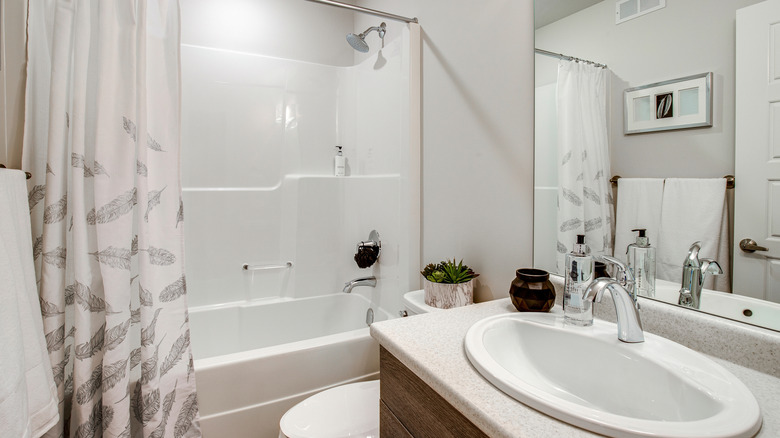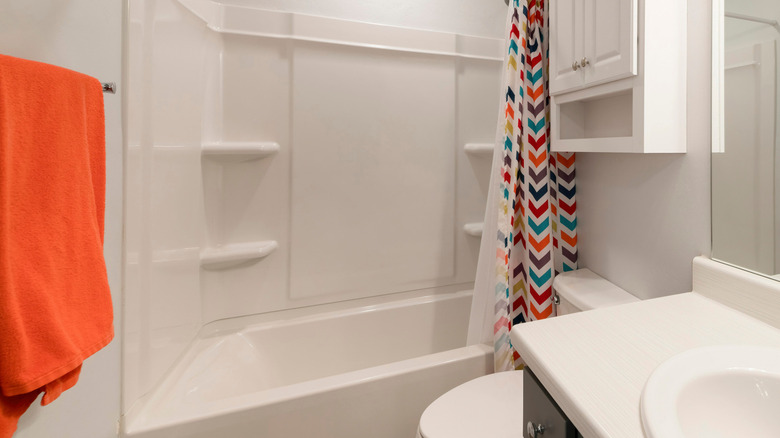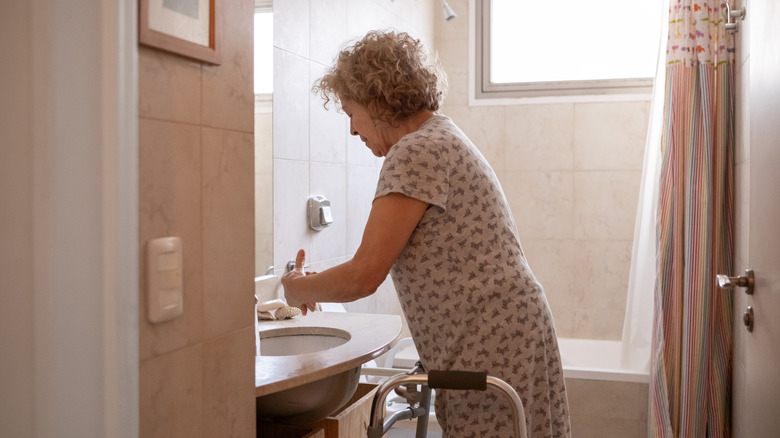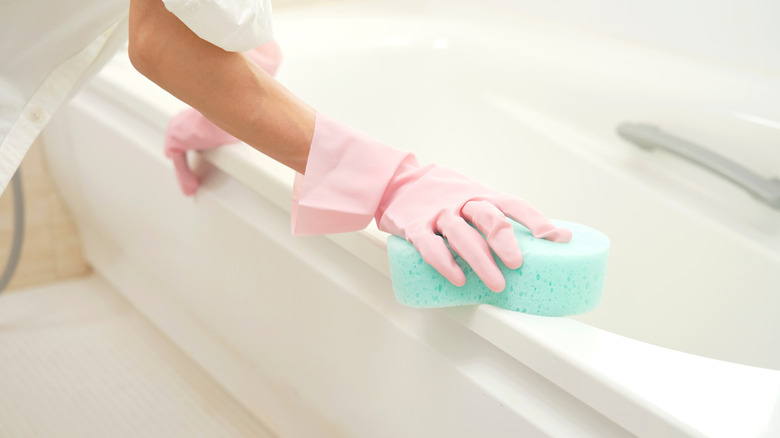The High-Maintenance Downsides Of Having A Shower-Tub Combo
A shower-tub combination is a classic choice many of us grew up with in our homes. Often made of fiberglass, porcelain, or acrylic, these fixtures are meant to expand your bathroom's functionality and make the most of the available space. Yet, this combo might lead to unforeseen hassles you should know about before beginning the installation process. They come with notable downsides for homeowners in terms of space, ease of cleaning, and accessibility.
You might consider this setup for your shower and tub because you're working with a bathroom that's on the smaller side. Perhaps you're planning a remodeling project and haven't quite decided if you want to knock down an awkward bathroom layout or just work with your current one. Or, maybe you're hoping to revamp your ensuite on the cheap. Whatever your reason for considering this option, it pays to do your research so you can know exactly what to expect. Here are a few reasons why the shower-tub combo might not be the best choice for your needs.
Shower-tub combos offer limited space
The compact nature of shower-tub combos enable them to fit in small spaces, but it's a double-edged sword. For starters, you'll have less room to wash yourself than in a walk-in shower. Consequently, it can feel quite cramped, particularly if you're not petite, and make it difficult to move around comfortably. Moreover, the tubs in these setups usually measure only 60 inches in length, making for an uncomfortable soak. Baths and showers are often intended for relaxation, but there's nothing relaxing about squishing yourself into a tight spot! Additionally, the shower head is positioned at a lower height as compared to rainfall and walk-in models. This can be troublesome, especially for taller individuals.
It's not just space for sprawling out during a nice soak or standing upright during a shower that you need to consider. Storage space in a bathtub is often at a premium. Generally, your only options are one or two tiny premolded shelves and the edge of the tub. This can be problematic if you prefer storing a big collection of shampoo, conditioner, body wash, and various shaving products near your shower area. Yes, you can buy bathroom storage options such as a shower caddy or attach some suction-cup shelves, but they'll just take up room that you might need to wiggle around in the shower.
Limited mobility can be a problem
Unfortunately, a shower-tub combo's multifunctional design can be a challenge for those with limited mobility and the elderly. This is because they'll have to climb over the tub wall every time they need a shower or bath, increasing their chances of falling. The height of bathtubs presents a tripping hazard and can worsen with a slippery bathroom rug. Worse, they might use sink tops or other unstable objects around the bathroom to support themselves while entering and exiting the bathtub. This poses serious risks for people with mobility or balance challenges. What's more, depending on your shower-tub's size, you might be restricted on where you can safely add a grab bar for assisted entry and exit.
Falls in the bathroom are one of the leading causes of injuries in the home for older adults. According to the Consumer Product Safety Commission (CPSC), emergency departments see an annual average of 97,100 injuries associated with bathtubs for individuals over 65. So, a shower and tub combination may pose a risk to the homeowner and cause extra worry for their caregiver. It might also not work for any homeowner wanting to grow old in their home.
You'll have double the cleaning tasks
If you have a dual setup of a shower and a tub instead of just one or the other, you'll have to clean them both. Since both of them will get dirty with regular use, you'll have a long scrubbing session ahead of you. Just imagine scrubbing the large combined surface area of your tub and your shower, the wall, and the accompanying fixtures. As these bathing options often feature caulk, you'll need to clean the area around your tub thoroughly to keep mold or mildew from growing in your bathroom.
Since the tub, shower, wall, and related fixtures are made of varied materials, each element of your shower-tub combo may require a different cleaning product. For instance, tubs made of fiberglass can be susceptible to scratches, plus need refinishing over time. While acrylic is considered a stronger, more durable choice for a shower-tub, it can develop scratches as well, especially if you use harsh, abrasive materials. All of these precautions can get annoying, particularly if you're someone who hates cleaning. Quite literally, they may be too high maintenance for you, leading you to choose a shower stall over the combination.
Other downsides of having a shower-tub combo
Choosing a shower-tub combo means you can't use the fixtures separately. Simply put, only one person can use it at a time. For instance, you'll have to say goodbye to your me-time soak if your kids or dog need a bath because there isn't a separate shower for them to use. Another downside is that they aren't exactly trendy. Plus, the design options can be quite scant compared to the gleaming separate shower and tub spaces at your local home improvement store or bath fixture warehouse. While you might find some dazzling color combinations, the possibilities might not hold the same appeal.
Last but not least, the presence of a shower and tub combination might be a turnoff for potential buyers if you decide to sell your home in a few years. This can vary based on your local market and buyer pool. For example, if you live in an area popular with young families, it might not be much of a bother. However, it can be a possible red mark on your otherwise pristine listing if the buyer demographic consists of older or wealthier adults.




